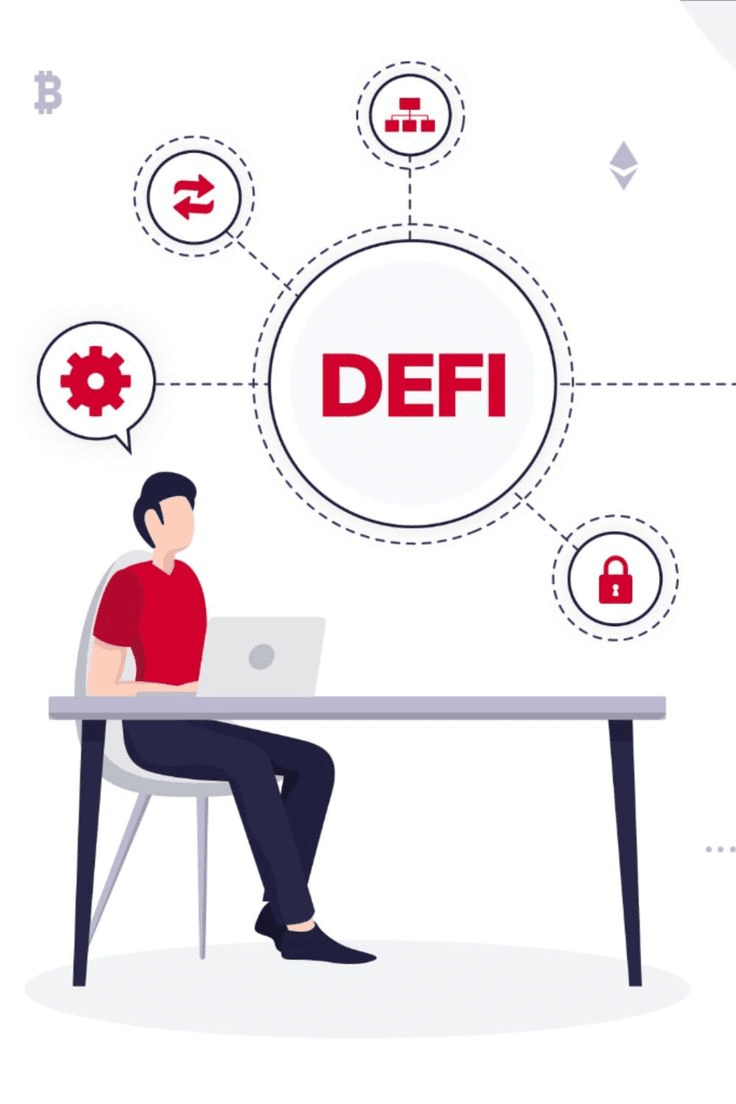The world of finance is undergoing radical changes. Decentralized financial services — or DeFi (from English Decentralized Finance) — are replacing traditional banks, brokers, and insurance companies. These solutions operate without intermediaries, directly through blockchain, and open access to financial instruments to anyone with internet.
What is DeFi, how does it work, and why is it talked about as the future of the global economy — we will explore in this article.
What is DeFi?
DeFi (decentralized finance) are financial services that operate based on smart contracts in blockchain networks. They allow for familiar financial operations — lending, exchanging, insuring, trading — without the involvement of banks, brokers, or other intermediaries.
Unlike traditional systems, DeFi operates transparently, automatically, and is available 24/7.
How does DeFi work?
Instead of individuals and organizations, decisions in DeFi are made by smart contracts — programs that execute automatically when specified conditions are met. They are typically deployed on the Ethereum blockchain or other compatible networks.
Main components:
Wallets (e.g., MetaMask) — for storing and interacting with digital assets.
Protocols (such as Aave, Compound, Uniswap) — replace banks and exchanges.
Tokens are digital analogs of currencies, stocks, bonds, and other assets.
What can be done with DeFi?
Borrowing and lending
Platforms like Aave and Compound allow users to earn interest by providing their tokens to a liquidity pool or to borrow against cryptocurrency collateral.
Exchange assets
Decentralized exchanges (DEX), such as Uniswap, allow for token exchanges directly between users, without intermediaries.
Insure assets
Protocols like Nexus Mutual provide decentralized insurance — for example, in case of a smart contract hack.
Invest in liquidity pools and yield farming
Users provide their funds to protocols to receive a share of the fees and rewards in the form of tokens.
Create and trade stablecoins
These are digital assets linked to real currencies (for example, DAI or USDC), which are used in calculations and investments.
Advantages of DeFi
Accessibility: to use DeFi, you don't need a bank, account, or approval — just internet and a crypto wallet.
Transparency: all transactions are open and recorded on the blockchain.
Automation: operations are performed instantly and without errors.
User control: no one can freeze the account or restrict access to funds.
Risks and disadvantages
Technical errors and hacks
Smart contracts may contain vulnerabilities. Errors in code or attacks by hackers can lead to significant losses.
Lack of regulation
In case of problems, the user has nowhere to turn — there are no guarantees like in a bank.
High volatility
Token prices can change sharply, especially during market instability.
Difficulty for beginners
Interfaces, terminology, and mechanics may be unclear to those unfamiliar with blockchain technologies.
Who is already using DeFi?
Investors — due to flexibility and potentially high yield.
Developers — create innovative financial tools on open protocols.
Residents of countries with limited access to banking services gain access to finance without needing to trust local institutions.
Development prospects
DeFi continues to grow. According to analytical platforms, the total value of assets 'locked' in DeFi protocols (TVL — Total Value Locked) has already reached tens of billions of dollars. The development of scalable solutions (Layer 2), the emergence of regulation, and the growth of trust from institutional investors pave the way for mass adoption.
Conclusion
DeFi is not just a new trend, but a fundamental rethinking of how the financial system works. In a world where trust can be replaced by code, and intermediaries — by automated protocols, each person gains more control over their money and opportunities.
#Defi #DeFiChallenge #bitcoin #BNBATH
